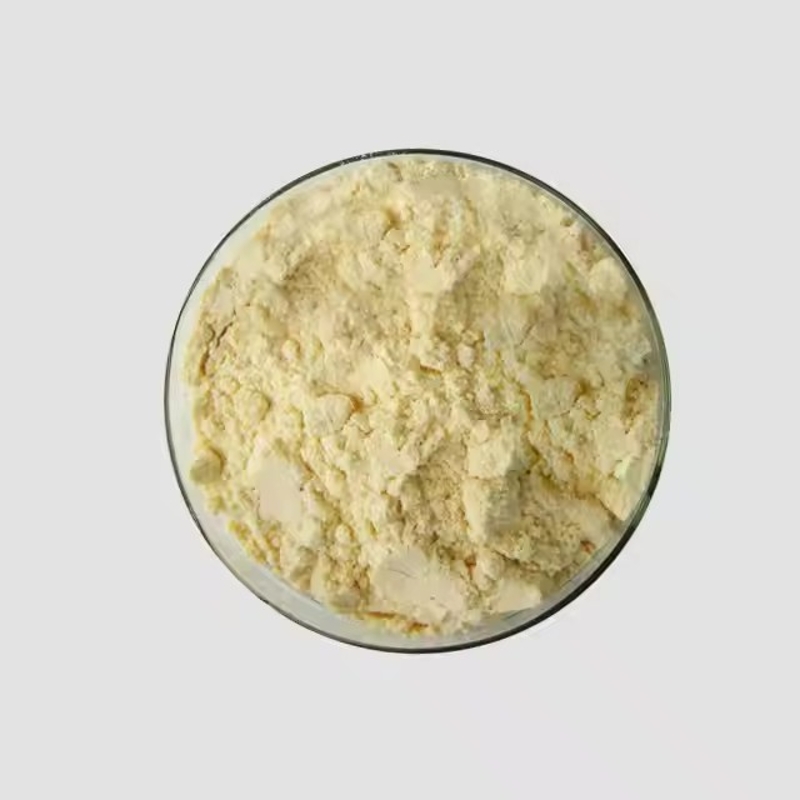-
Categories
-
Pharmaceutical Intermediates
-
Active Pharmaceutical Ingredients
-
Food Additives
- Industrial Coatings
- Agrochemicals
- Dyes and Pigments
- Surfactant
- Flavors and Fragrances
- Chemical Reagents
- Catalyst and Auxiliary
- Natural Products
- Inorganic Chemistry
-
Organic Chemistry
-
Biochemical Engineering
- Analytical Chemistry
-
Cosmetic Ingredient
- Water Treatment Chemical
-
Pharmaceutical Intermediates
Promotion
ECHEMI Mall
Wholesale
Weekly Price
Exhibition
News
-
Trade Service
2H-Thieno[3,2-e]-1,2-thiazine-6-sulfonamide, 3,4-dihydro-4-hydroxy-2-(3-methoxypropyl)-, 1,1-dioxide, (4S)- is a chemical compound that is commonly used in the chemical industry.
It is a yellow or greenish-yellow powder with a strong, unpleasant odor.
The compound is known for its antimicrobial properties and is often used as a preservative in various products, such as cosmetics, drugs, and food additives.
However, the safety of this compound has been a subject of concern for many years, with some studies suggesting that it may have harmful effects on human health.
In this article, we will examine the potential dangers of 2H-Thieno[3,2-e]-1,2-thiazine-6-sulfonamide, 3,4-dihydro-4-hydroxy-2-(3-methoxypropyl)-, 1,1-dioxide, (4S)- and discuss the measures that can be taken to ensure its safe handling and use.
To begin with, it is important to note that the compound is a strong irritant to the eyes, skin, and respiratory system.
Prolonged exposure to the compound can cause severe skin irritation, including redness, itching, and blistering.
Inhalation of the compound can lead to coughing, wheezing, and difficulty breathing.
Additionally, studies have suggested that the compound may be carcinogenic, with the potential to cause cancer in humans.
One of the main concerns with the use of 2H-Thieno[3,2-e]-1,2-thiazine-6-sulfonamide, 3,4-dihydro-4-hydroxy-2-(3-methoxypropyl)-, 1,1-dioxide, (4S)- is its potential toxicity to the environment.
The compound is highly soluble in water and can easily be absorbed by living organisms, leading to harmful effects on aquatic life and potentially on human health.
Additionally, the compound is classified as a persistent organic pollutant (POP) and can remain in the environment for long periods, leading to the accumulation of the compound in the food chain.
In order to minimize the risks associated with the use of 2H-Thieno[3,2-e]-1,2-thiazine-6-sulfonamide, 3,4-dihydro-4-hydroxy-2-(3-methoxypropyl)-, 1,1-dioxide, (4S)-, it is important to handle the compound with care and follow proper safety protocols.
This includes wearing appropriate protective gear, such as gloves and masks, to prevent skin and respiratory exposure.
It is also important to ensure that the compound is stored in a secure location and that any spills or leaks are cleaned up immediately.
In addition to proper handling, it is also important to ensure that the compound is used only in its intended applications and in the recommended concentrations.
Prolonged or excessive exposure to the compound can lead to harmful effects, and it is important to use the compound only as a preservative and not as a primary active ingredient in any product.
Furthermore, it is important to ensure that the compound is properly labeled and that all relevant safety information is provided to those who may come into contact with the compound.
Finally, it is important to monitor the environmental impact of 2H-Thieno[3,2-e]-1,2-thiazine-6-sulfonam







